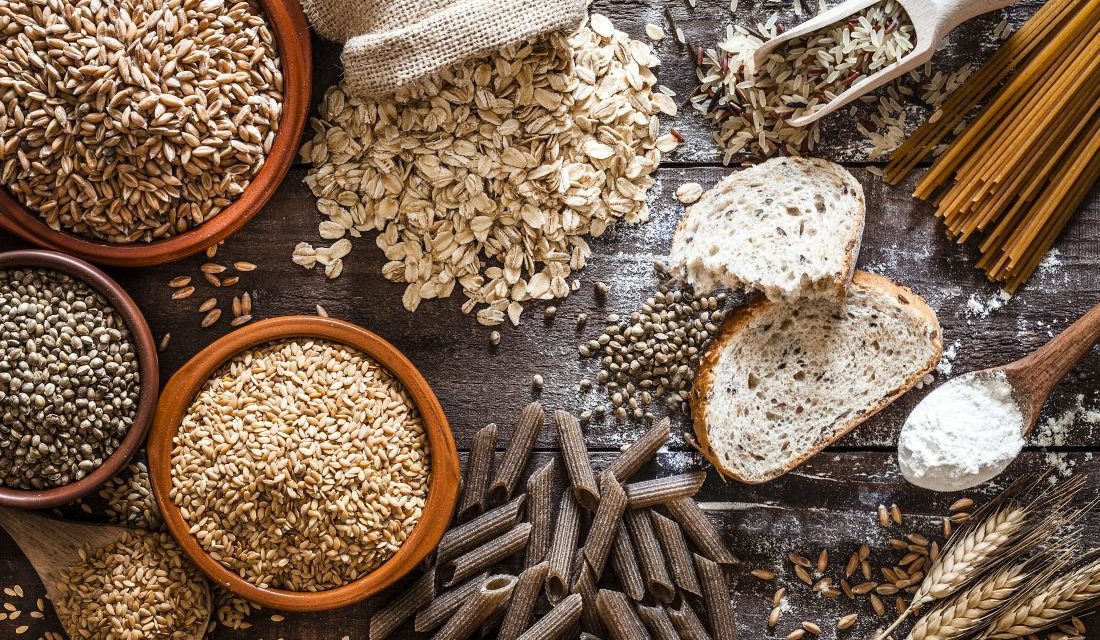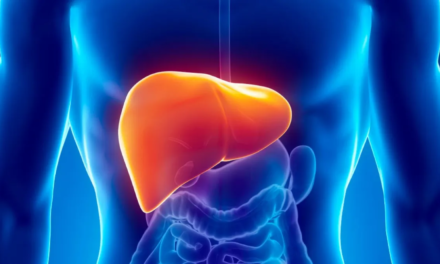Copyrighted by Dr. David Friedman
Carbohydrates are a macronutrient that the body uses as a primary source of energy. While many weight loss diets have people believing that CARB is a four-letter word, that’s actually far from the truth. There are certain carbs that aren’t healthy to consume and other forms that are very healthful and should remain a part of the diet. Most people equate carbs with bread and pasta, but you can also find them in foods like grains, legumes, seeds, vegetables, and fruits. These foods contain fiber and starch and are considered complex carbohydrates, while sugary products like donuts, cookies, bread, and spaghetti are considered simple carbohydrates. Complex carbs offer healthful nutrients and fiber, whereas simple carbs do not. Complex carbs are also more filling and aid in helping people lose weight. Simple carbs cause people to gain weight. In addition, complex carbs won’t spike blood sugar, making them ideal for those with type 2 diabetes.
Complex Carbs Rankings:
1. BEANS
Beans are considered the most healthful food on the planet! In fact, their health benefits trace back to 6,000 B.C and research proves beans are good for us and should be part of a healthy diet. Beans are commonly eaten among people living in the “Blue Zones,” places around the globe where people live the healthiest and longest lives; many of them well beyond 100 years of age! Beans are chock-full of fiber, protein, complex carbs, antioxidants, and vitamins. Beans help with weight loss, increase our lifespan, and lower our risk of heart attack, diabetes, and cancer.
Beans are great for cardiovascular health because they contain quercetin and saponins. Quercetin is a natural anti-inflammatory that helps reduce the risk of plaquing of the arteries — it also protects against damage caused by low-density lipoprotein (LDL) cholesterol. In addition, the saponins found in beans help lower blood lipid and blood cholesterol levels, which protects the valves of the heart. Clinical studies have suggested that saponins also decrease cancer risks.
Beans offer a great source of calcium, magnesium, iron, manganese, copper, and zinc, all of which contribute to building and maintaining bone structure and strength. When it comes to gut health, beans help aid in preventing constipation and provide fuel for the healthy bacteria in the colon. The high fiber content of beans also helps reduce cholesterol levels. Plus, beans are a great option if you want to lose weight and reduce your waist circumference.
But the most impressive health benefit of eating beans is, that they help to reduce the development of cancer thanks to powerful flavonoids. In fact, research published in 2015 analyzed antioxidant properties in various foods that can help fight intestinal cancer, and beans were shown to have the most potent antioxidant properties. Beans also contain alpha-linolenic acid, which is necessary for a healthy brain. Increasing your alpha-linolenic acid consumption may help prevent and treat heart conditions, including atherosclerosis, and the hardening of blood vessels.
2. OATMEAL
Oatmeal is one of my all-time favorite foods! Oats are among the healthiest gluten-free grains on earth! They are rich in healthy complex carbs and an excellent source of gut-healthy fiber, vitamins, minerals, and antioxidants. Oats provide more protein and healthy fat when compared to other grains. Whole oats contain a unique group of antioxidants called avenanthramides, which are almost solely found in oats. These compounds have been shown to have powerful anti-inflammatory properties and may help to lower blood pressure. Oatmeal offers a great source of B vitamins, iron, and manganese, which can all help aid in sustained energy. Unlike many other breakfast options, oatmeal won’t cause a blood sugar spike. A systematic review published by the journal Nutricion Hospitalaria found that eating beta-glucans, the soluble fiber found in oatmeal, helps to lower blood glucose levels in people with diabetes. A study published by the American Journal of Clinical Nutrition also shows adding three or more grams of beta-glucans from oats to the diet helps reduce bad cholesterol levels while keeping good cholesterol levels the same.
FYI: Don’t go with instant oatmeal because they are overly processed, pre-cooked, dried, and then rolled and toasted. Instead, opt for steel-cut oats (aka “Irish oatmeal,”) because they are closest to their original grain form and are the healthier option.
3. LENTILS
Lentils are tiny round legumes that come in a variety of sizes and colors, including brown, yellow, black, red, or green. They’ve long been a staple in Indian cuisine and are considered a plant-based protein staple among vegans. Lentils are a great source of polyphenols, powerful anti-inflammatory micronutrients that may offer protection from the development of cancers, cardiovascular disease, osteoporosis, and diabetes. Lentils are also a great source of iron. We need iron to help oxygen circulate throughout the body. Lentils are an excellent go-to for gut-healthy fiber! In fact, one cup of lentils has 15.6 grams of fiber, which is actually almost four times as much as a cup of raw kale.
Lentils offer a powerhouse of vitamins and minerals including B Vitamins, calcium, magnesium, zinc, and potassium. They are also a great source of folic acid which supports healthy hair growth and can lower the risk of heart attacks and stroke. This nutrient is also vital for women who are pregnant or planning on becoming pregnant. Lentils have been found to help lower blood pressure better than peas, chickpeas, and beans. They’re also associated with an overall lower risk of heart disease.
4. QUINOA
Quinoa is not an easy word to spell for many, but that shouldn’t stop you from adding this gluten-free super-food to your diet. Quinua (oops, I misspelled it too) is one of the few plant foods on the planet that contain sufficient amounts of all nine essential amino acids, making it a “complete protein.” Often used as a substitute for rice, quinoa is commonly considered to be a grain, but it’s actually a seed. Quinoa is rich in fiber, B vitamins, magnesium, potassium, calcium, phosphorus, iron, and vitamin E. In addition, quinoa is extremely high in antioxidants, which are substances that neutralize free radicals and can help combat the wrath of many age-related diseases. In fact, research comparing the antioxidant levels of ten other legumes, grains and cereals, found quinoa had the highest antioxidant content of them all!
Because quinoa is high in fiber and has a low glycemic index (how quickly sugar gets absorbed by the body,) it’s a great aid in weight loss. In an article published in the Journal of the Science of Food and Agriculture, it stated that quinoa has an exceptional balance of protein, oil and fat, as well as its minerals, fatty acids, antioxidants, and vitamins, making it one of the world’s most highly nutritious foods. Quinoa contains phytohormones which are being studied as a treatment for females suffering from menopause symptoms because they often behave like estrogens in the body. Research also suggests quinoa may improve metabolic health, by reducing blood sugar, insulin, and triglyceride levels.
5. WHOLE GRAIN BREAD AND PASTA
Whole grains are healthy and the ONLY reason I’m not listing them as my number one pick is that many people have developed an inability to properly digest the gluten found in grains. Gluten is a family of proteins in grains like wheat, rye, spelt and barley. As I share in my #1 best-selling book Food Sanity, humans have been digesting gluten-containing grains for 3 ½ million years! Our grandparents didn’t have issues eating grains. Why all of the sudden in the last couple of decades have people developed gluten sensitivities? It has to do with chemicals found in our food and water supply like pesticides, antibiotics, and perfluorinated chemicals (BPA, PFOS) that can destroy the microbiome (“good bacteria”) of our gut. This causes inflammation and a “leaky gut,” which makes gluten difficult to digest. However, people eliminating these gut-destroying chemicals that don’t have celiac disease (a true gluten allergy) should be eating whole grains!
Whole-grain bread and pasta is very healthy for you! They offer fiber, healthy plant-based protein, vitamins, minerals, and a variety of healthy phytochemicals. Whole grains have all of the parts of the original kernel—bran, germ, and endosperm—in the original proportions. In refined grains, the bran and germ are stripped away, so stay away from this option. Whole grains, particularly wheat, contain phenolic acids, a type of antioxidant with documented cancer-inhibiting properties. Whole grains also help lower triglycerides and prevent the body from absorbing “bad” cholesterol that can contribute to heart disease. In addition, research shows whole grains can lower your risk of diabetes, protect you from stroke, obesity, and prevent cancer!
FYI: Be sure and look for the word “whole”—either whole grain or whole wheat. Also, make sure the grain is one of the first three ingredients listed on the label. Look for products with a “whole grain” stamp from the Whole Grains Council, which ensures there’s at least half a serving of whole grains inside.
6. BUTTERNUT SQUASH
Though commonly thought of as a vegetable, butternut squash is technically a fruit. Butternut squash offers an impressive assortment of health benefits including cancer prevention and improved vision, as well as diabetes management and enhanced heart health. Squash gets its distinctive color from carotenoids, like beta-cryptoxanthin. This plant pigment contains powerful antioxidants, which research shows could reduce your risk of developing arthritis and other inflammatory conditions.
Butternut squash offers a rich source of vitamins A and C — which enhance your vision and immune system, respectively — as well as iron and riboflavin, both of which help the body produce sustained energy. Butternut squash is effective at protecting against heart disease. In fact, a study of 2,445 people demonstrated that heart disease risk fell 23% for every additional daily serving of butternut squash. Because it contains both insoluble and soluble fiber, butternut squash has been associated with fat loss and appetite reduction. That is of course if you can resist the urge to add butter and marshmallows on top.
7. POTATOES
White potatoes are a great source of several nutrients, including potassium, magnesium, dietary fiber, and vitamin B6. The white spud is also an excellent source of resistant starch, which feeds the friendly bacteria in your intestines. White potatoes offer a high-quality protein because of their superior amino acid complex. In fact, white potatoes actually exceed the recommended amino acid levels for lysine, methionine, threonine, and tryptophan — amino acids that play a vital role in cellular repair.
However, white potatoes also have a downside. The carbohydrate or starchy part of this potato ranks high on the glycemic index — that means it enters the bloodstream faster, which is a plus if you’re an endurance athlete. Food is fuel and a plain baked potato makes an excellent meal before a challenging workout.
In general, you are better off eating sweet potatoes. Even though they have the word ‘sweet’ in their name, these potatoes are diabetic-friendly and won’t spike your blood sugar. In fact, their high fiber content actually helps with blood glucose control and weight management. Orange-fleshed sweet potatoes are one of nature’s unsurpassed sources of beta-carotene, which is needed for healthy skin and mucous membranes, our immune system, good eye health and vision. They are also high in manganese, which aids in the formation of connective tissue, bones, blood-clotting factors and sex hormones. This mineral also plays a role in fat and carbohydrate metabolism, calcium absorption, and blood sugar regulation.
8. PEAS
Peas are low in calories and contain several vitamins, minerals and antioxidants. They’re also high in fiber and protein. Peas contain antioxidants known as catechins, which can improve heart health and help prevent cancer. The high protein content of green peas makes them an excellent food choice for those who do not eat animal products. Peas are also a rich source of fiber and protein, which offers great blood sugar-controlling properties. The reason for this is due to the slow rate at which these carbs are absorbed. This promotes a slower, more stable rise in blood sugar levels, rather than a spike
Peas may also reduce the risk of heart disease due to their high levels of polyphenolic antioxidants, which are flavonoids that have anti-inflammatory properties. Test subjects with high flavonoid levels have shown anti-thrombotic results, meaning they can prevent blood clots. They’ve also been shown to reduce the risk of birth defects for pregnant women. If you aren’t eating peas in your diet, in the words of John Lennon, “Give peas a chance!”
9. MILLET
Millet is a small cereal grain that belongs to the grass family. It’s used for human consumption, livestock and bird feed. Millet is chock-full of essential amino acids, compounds that are the building blocks of protein. They offer many nutrients including phosphorus, magnesium, folate, and iron, and contain the highest calcium content of all cereals. So instead of drinking that glass of milk for strong bones, reach for the millet. Millet is rich in ferulic acid and catechins, antioxidants that protect your body from harmful oxidative stress. Millet is also a great source of fiber and non-starchy polysaccharides, two types of undigestible carbs that help control blood sugar levels.
The high fiber content in millet may help reduce low-density lipoprotein (LDL) or “bad” cholesterol while boosting high-density lipoprotein (HDL) or “good” cholesterol.
10. BROWN RICE
Rice is one of the most widely consumed staple food in the world. In fact, more than 3.5 billion people (i.e., half the planet) rely on these miniature grains for 20 percent of their daily calories. But some types of rice are healthier than others. The general rule of thumb is, that the whiter the rice, the less nutritionally dense it is. The darker varieties of rice contain whole grains, which include the fibrous brain, the nutritious germ, and the carb-rich endosperm. White rice, on the other hand, is processed and stripped of its nutritious content — this can lead to a spike in blood sugar levels and an increased appetite.
Brown rice gets its color, flavor, and texture from the bran layers that remain on the rice when it goes through the hulling process. It retains the healthy bran layers because it’s milled for less time than white rice. Brown rice is better than white rice when it comes to magnesium levels, containing 4 times more of this nutrient than white rice. The mineral magnesium is crucial for heart, bone, muscle, and brain health. This is beneficial since 50% of Americans are magnesium deficient. Brown rice is also a decent source of thiamine, zinc, and iron. When comparing the glycemic index (how quickly sugar gets absorbed by the body,) brown rice is also a better option than white rice. Brown rice also offers a decent amount of manganese, a mineral that aids in collagen production and supports healthy skin, ligaments, and joints. What’s more, people who eat brown rice instead of white rice can decrease their risk of type 2 diabetes by 16 percent!
While brown rice is a better choice than white rice, you are way better going with black or wild rice as the healthier complex carb.

About the Author
Dr. David Friedman is the author of the award-winning, #1 national best-selling book Food Sanity, How to Eat in a World of Fads and Fiction. He’s a Doctor of Naturopathy, Chiropractic Neurologist, Clinical Nutritionist, Board Certified Alternative Medical Practitioner, and Board Certified in Integrative Medicine. Dr. Friedman is a syndicated television health expert and host of To Your Good Health Radio, which has changed the face of talk radio by incorporating entertainment, shock value, and solutions to everyday health and wellness issues.
FOODSANITY.COM
Click Here to View or Buy the Print Magazine




